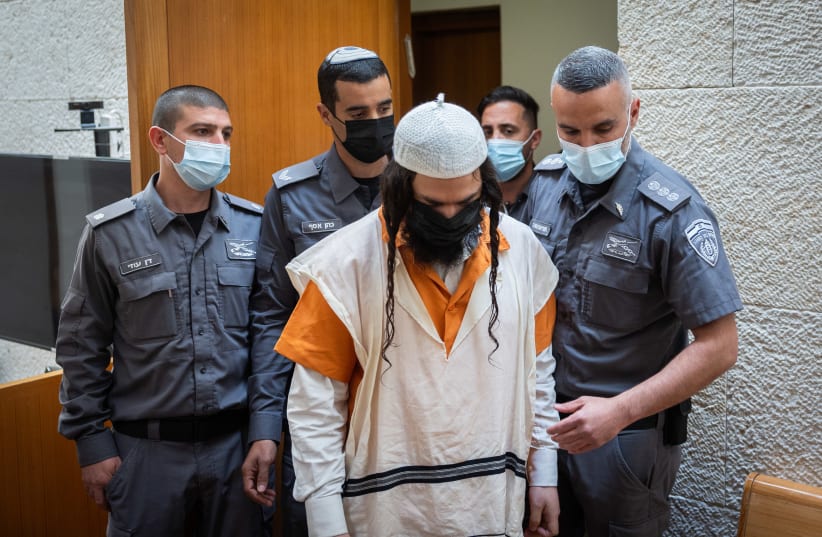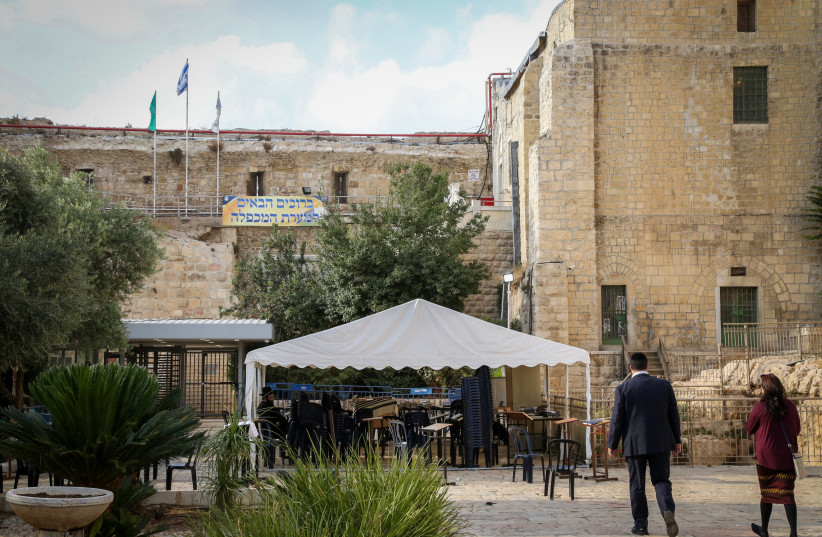In a scathing 60-page report titled "The Unpunished: How Extremists Took Over Israel," The New York Times argues in three parts there is a separate and unequal system of justice in the West Bank for Jewish residents and Arab residents and then outlines how extreme fringes in Jewish society became part of the current government.
The report begins by asking, “How did a young nation turn so quickly on its own democratic ideals, and at what price?”
The first part, titled “Impunity,” recounts a long history of Jewish residents in the 5,860 square kilometers disputed territory receiving significantly shorter and less harsh sentences than their Arab counterparts. In many instances, authorities choose to ignore acts of vandalism, torching vehicles and cutting down olive groves.
In contrast, The New York Times says that Arab residents face lengthy detentions and interrogations for “the simple admission of identifying with Hamas,” which counts as an act of terrorism.
The first part begins with the narrative of Arab residents in the town of Khirbat Zanuta, who faced threats, harassment, and vandalism from nearby Jewish residents of Hebron. After authorities did nothing to put a halt to these activities, the Arab residents packed their bags and left. Then, an unknown entity bulldozed their homes. Some claim it was the Jewish residents, some say it was the police, and some say the IDF.
The report argues that this type of activity occurs often; however, “protecting the people who carry out that violence is the dark secret of Israeli justice.” According to lawyers from Haqel, an Israeli human rights organization, the violence has gotten worse since Hamas’s October 7 terror attack.
According to the evidence collected for this report, the writers argue that “in many ways, the violent settlers and the state have become one.” The report says the information expressed within comes from legal documents, as well as interviews and testimonies from all parts of Israeli security, government officials, Palestinian activists, and lawyers.
In 36 cases since October 7, involving misdeeds from stealing livestock to assault and arson, not a single suspect was charged with a crime, according to the report. In one case, a Jewish resident shot a Palestinian resident of the West Bank in the stomach while an IDF soldier witnessed the action, yet the police questioned the shooter for only 20 minutes and never as a criminal suspect, the report states, citing an internal Israeli military memo. According to the report, citing human rights group Yesh Din, only three percent of such activities have resulted in any conviction between 2005 and 2023.
Jews settling in the West Bank
In the next section of the first part of the report, the writers recount how Jewish residents ended up in the West Bank, guided by a religious and political movement called Gush Emunim, founded by Tzvi Yehuda Kook, or Rav Kook, among a few others.
Tzvi Yehuda Kook is famed for his quote, “Where is our Hebron? Where is our Shechem, our Jericho… Have we the right to give up even one grain of the Land of God?” This quote sums up the ideology of the Religious Zionist movement in Israel that seeks to settle all corners of “The Land of God.” The cities mentioned are all currently Arab majority cities in the West Bank, however Hebron had a Jewish presence up until 1936 shortly after a massacre in 1929.
The city is considered one of Judaism’s major holy cities in Israel, containing the Cave of the Patriarchs where Jewish patriarchs and matriarchs Abraham and Sarah, Isaac and Rebecca, Jacob and Leah are alleged to be buried. Jews began returning to Hebron in 1967 when the West Bank was recaptured in the Six Day War.
International scholars and human rights activists debate the legality of Jews settling in the West Bank amid a military occupation.
After Israel captured the West Bank in 1967, 10 years later the Likud party won elections, which left the party with the responsibility of allocating the newly claimed land. Prime Minister at the time, Menachem Begin, sought a legal basis for expanding Jewish settlements on the land. According to The New York Times report, Plia Albeck at the Israeli Justice Ministry discovered the Ottoman Land Code of 1858. This law enabled the sultan to take any land that its owners had not cultivated for a number of years and that was not “within shouting distance” of the last house in the village. Albeck then proceeded to map the West Bank to find eligible plots of land. This led to the creation of over 100 new Jewish settlements in the West Bank.
As Gush Emunim gained influence, a militarized branch of the organization formed, called the Jewish Underground. The New York Times uses their first act against Palestinians in the disputed territory as an example of settler impunity. In 1980, car bombs exploded as part of a complex assassination plot against prominent Palestinian political figures in the West Bank. The attack blew the legs off Bassam Shaka, the mayor of Nablus and a member of the Palestinian Liberation Organization (PLO), and Karim Khalaf, the mayor of Ramallah, also a member of the PLO was forced to have his foot amputated.
Brig. Gen. Binyamin Ben-Eliezer, then the top IDF commander in the West Bank, commented on the attack, saying, “It’s a shame they didn’t hit them a bit higher.” An investigation began, but it would be years before it achieved any results. Ben-Eliezer went on to become a leader of the Labor party and defense minister.
The New York Times report does not specify that the two politicians were involved in a terrorist organization. According to the report, many Israeli academics wrote letters to Yitzhak Zamir, Israel’s attorney general, expressing concern for illegal “private policing activity,” alluding to labeling the attack as an act of vigilante justice. They argue that these acts present a “threat to the rule of law in the country.”
Following research done by Zamir and his deputy, it was discovered that even in cases such as murder and assault, nothing was done by the IDF or any Israeli authorities. In addition, their 33-page report was buried.
The New York Times report then discusses a wave of violence throughout the 1980s against Palestinians by Jews in the West Bank. Finally, the Shin Bet foiled a Jewish Underground plot to blow up five buses filled with Palestinians in 1984.
Warnings against settlements
In part two of the report, titled “Warnings,” the writers outline instances in which officials all across the world, including the Delaware Senator Joe Biden, warned Israeli officials that settler impunity harms Israel’s democratic legitimacy.
In a testimony shared with The New York Times, an anonymous previous Shin Bet mole said one of the worst instances of intelligence and operational failures to deal with Jewish extremists was the December 1993 murder of three Palestinians as revenge after the murder of a Jewish community leader and his son. Driving home from a day of work in Israel, the three Palestinians, who had no connection to the deaths of the settlers, were pulled from their car and killed near the West Bank town of Tarqumiyah. The Shin Bet recounted more how one Jewish activist proudly told him that he and two friends committed the murders. He contacted his Shin Bet handlers to tell them what he had heard. “And suddenly, I saw they were losing interest,” the Shin Bet mole said.
He says that later, he learned that two of the shooters were Shin Bet informants. He claims that the service didn’t want to blow their cover, or worse, to suffer the scandal that two of its operatives were involved in a murder and a cover-up.
The report then discusses the conspiracy theories that led to the murder of Rabin by a Jewish extremist. At this point, the article speculates, is when Israeli officials began to show concern over Jewish extremism because it could also be deadly towards Jews.
According to the report, among the conspirators of Rabin’s assassination was a Shin Bet agent, who has since been released.
Later in the report, the writers discuss the withdrawal of Jewish residents from Gaza, a move that was highly controversial at the time and one that remains controversial today, as, in 2007, with a leadership vacuum in place, Hamas violently took over leadership of the strip and began firing rockets at Israel from the territory.
In 2005, the Jewish Department of the Shin Bet received intelligence about a plan to slow the Israeli withdrawal from Gaza by using 700 liters of gasoline to blow up vehicles on a major highway. Acting on the tip, officers arrested six men in central Israel. One of them was Bezalel Smotrich, the future minister overseeing civilian affairs in the West Bank. Smotrich, then 25, was detained and questioned for weeks, however was released after several weeks with no charges.
The next generation of extremists
In the final part of the report, titled “A New Generation,” the writers discuss this impunity in the last ten years. They discuss a group self-titled Hilltop Youth, a group of Jewish extremist settlers which believes in a religious Jewish state ruled by Jewish law, with a king, and the reinstitution of the Temple Mount, the site holiest to Jews in the world, which is not supposed to be rebuilt until the messiah comes (different sects have different interpretations of this). The Temple Mount sits under the Dome of the Rock, one of the holiest sites to Muslims in the world, third to only Mecca and Medina.
A former Hilltop Youth member recounted to The New York Times that the organization would throw rocks at Palestinian cars as they drove by while the IDF idly watched. The Hilltop Youth has also been discovered to plot against the current government to carry out their plans, The New York Times highlighted specifically an incident in 2013. The Hilltop Youth was responsible for torching mosques and monasteries in 2014.
The writers then conclude the third part of the report by discussing allies of the settler movement in the US, such as Donald Trump and members of his office at the time, as well as the members of the Israeli government who have promoted the movement of Jews to the West Bank and the expulsion of Arabs including Itamar Ben-Gvir, Bezalel Smotrich, and their policies against Palestinians. These policies include removing the Palestinian flag from public spaces in Israel and ordering drastic cuts to the Palestinian Authority budget, a move that led the Shin Bet and the IDF intelligence division to raise concerns that the cuts would interfere with the Palestinian Authority’s own efforts to police and prevent Palestinian terrorism, The New York Times added, without mentioning the Palestinian Authority’s “pay for slay” policy which financially rewards the family members of those who kill Jews.
The report concludes with a section titled “The Only Way Forward.” The section then writes hopefully about how the US is now currently beginning to sanction extremist settlers in the West Bank. The report concludes that the British government soon began to follow.

